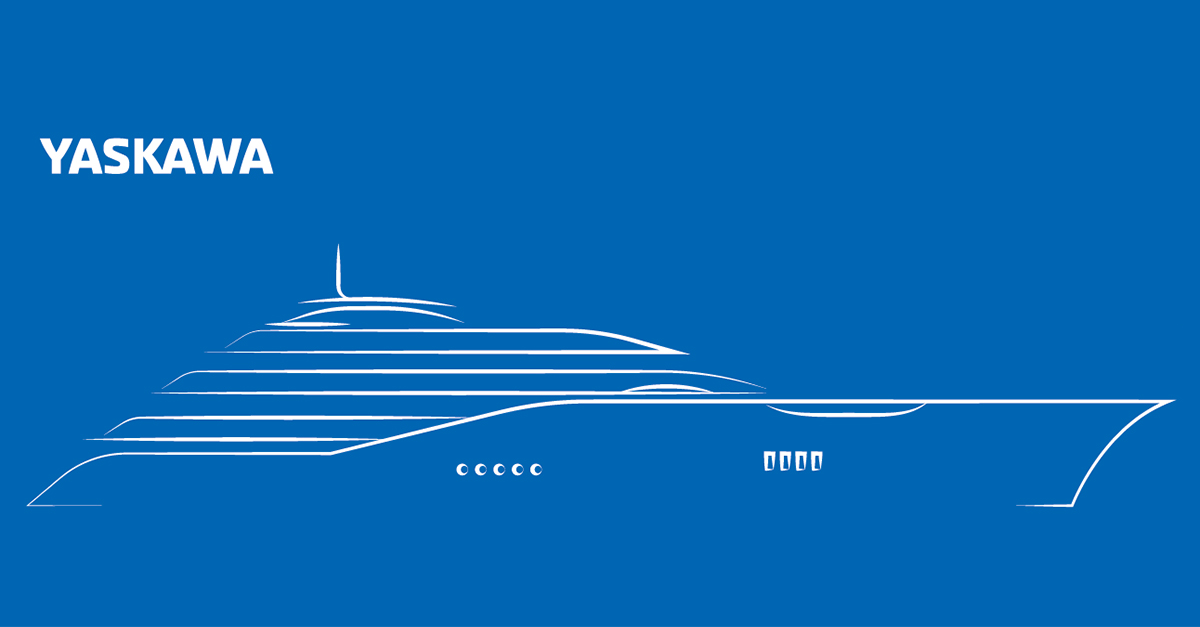How superyachts can benefit from hybrid power sources
Quiet yet powerful. Practical yet stylish. Fast yet environmentally responsible. The must-get automobile of the jet set, Tesla has taken the world’s highways by storm. But is there a similar craft that can conquer the oceans? What is the “Tesla of the Seas”?
Hybrid superyachts
After all, your diesel-powered superyacht could stand an upgrade.
First there’s power. You could always use more. Your powerful diesel engine can keep you cruising through the Caribbean or the Mediterranean no problem. However, it’s always nice to have a little extra boost available if need be.
Second, comfort. As you know, diesels can cause a lot of extra noise and vibrations that affect the quality of life on board the ship.
Third, as always, there’s the environment to think about. And – let’s face it – your carbon footprint could stand some downsizing.
The “Tesla of the Seas” is a hybrid solution from Yaskawa Environmental Energy / The Switch. It merges diesel power with electric The Switch technologies, such as single drives, permanent magnet (PM) motors, electric propulsion, Power Drives and a DC-Hub, enabling superyachts to run on either diesel or battery power or both.
Let’s consider how the hybrid superyacht addresses these issues.
Regarding power: Traditional diesel superyachts offer a surplus of installed propulsion power that tends to be wasted during everyday operations. Normal cruising speed only demands a part load of the engines, and maneuvering in coastal areas and harbors often only requires the engine to idle. Hence, typical load profiles show most engines running at part load and occasionally spiking with a higher peak power demand – when you need it. To optimize power delivery, you need greater versatility through multiple modes of propulsion.
A hybrid solution provides five different power modes: maneuvering, diesel-electric, range, high speed and boost. For example, let’s consider the low-end and high-end settings. During low-power demand operations, such as cruising, a series of parallel diesel engine generator units deliver power that optimize maneuverability. Meanwhile, during high-power demand operations, if there is a sudden need for an extra boost, the battery can instantly turn on and provide it. At the same time, generators running at a higher average load profile help optimize specific fuel consumption.
Regarding comfort: No one’s willing to invest millions in a superyacht and then put up with extra noise and vibrations. Are you? No, of course not. But these nuisances are typical of ships with diesel engines. It’s also characteristic that the engine room is on the hull, transmitting vibrations easily and using valuable space. To improve comfort levels, you need to minimize noise and vibrations while making the most of limited space.
The hybrid reduces noise and vibrations. An electrical propulsion system provides super-quiet running at low speeds, which is ideal for overnight travel. The diesel-electric system also enables greater options in how a superyacht is designed and built. Instead of requiring an engine room to be on the hull, the hybrid solution enables generators to be positioned away from the propeller shafts and allows the engine room to be located anywhere on board the ship.
Regarding the environment: The world is demanding cleaner and lower environmental impact energy sources in industry, transportation and power generation. Like other sectors, yachting must acknowledge its carbon footprint. Today, more and more superyacht designers, builders and owners are seeking new ways to make their ships more environmentally friendly.
What’s more, impending emission legislation such as the International Maritime Organization (IMO) 3 regulation will require larger after-treatment devices for exhaust fumes that will take up more valuable space on board the ship. Unfortunately, the combination of big engines and after-treatment systems do not tend to operate optimally.
Furthermore, superyachts operating at low engine loads result in low exhaust temperatures and higher specific fuel consumption, complicating the usage of exhaust after-treatment systems, which rely on higher exhaust temperatures to maintain high performance.
And diesel engines can cause nasty emissions in harbors and marinas.
To help alleviate these environmental concerns, you need to optimize energy usage.
The hybrid helps future-proof superyachts against the increasing demand for clean energy and a low environmental impact, offering a new way to make ships more environmentally friendly. The solution also helps owners comply with impending legislation while avoiding the need to take up valuable space on their ships with larger after-treatment devices for exhaust fumes. It also helps avoid the clumsy performance issues affiliated with big engines and after-treatment systems running less than optimally.
Moreover, the hybrid solution increases the average exhaust temperatures, lowering fuel consumption and enabling owners to deploy, if necessary, more compact after-treatment systems. And by running on pure electrical power captains can run their ships through harbors and marinas without producing nasty emissions.
Together, all of these benefits will help optimize power, increase onboard comfort, significantly lower emissions and fuel consumption, and minimize maintenance issues.
